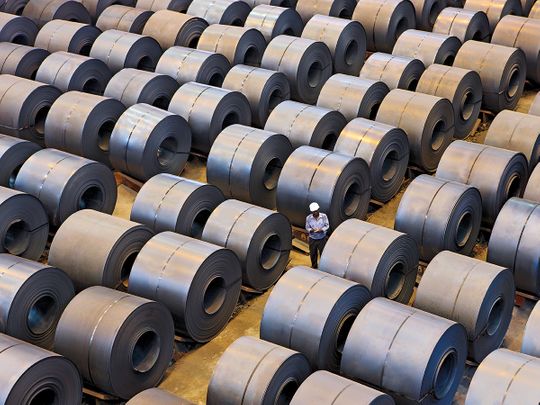
At a time when the global economic growth rate is under pressure and set to go down, India remains a bright spot retaining the fastest-growing economy tag with a 7.5 per cent growth projected by the World Bank for the next three financial years (2020-2022).
The reforms initiated in the past three to four years in the country including Rera, IBC and GST have started yielding results and India is on course to accelerate the growth rate from the existing to around 7-8 per cent in the coming years.
There are some who believe that global trade tensions and the upcoming general election may disrupt the recovery for some time. However, a recent survey undertaken by the Federation of Indian Chamber of Commerce and Industry (FICCI) with PwC revealed that India Inc. is optimistic about growth prospects in the next 12 months.
The sectors surveyed foresee faster growth.
The survey reveals the growing importance of exports to manufacturing companies in the future, with a focus on a good mix of parts — component trade along with product trade. Further, the industry seems to have begun placing greater emphasis on technology integration, including a renewed focus on R&D and innovation.
Reforms
To cement India’s status as a global export destination, India Inc. expects the government to focus on business ecosystem reforms and the industry’s integration with global value chains.
Currently, more than 65 per cent of the companies whose CXOs participated in the survey have the Indian market as their major source of business.
However, 85 per cent of them believe their future growth will be driven by export demand. This is in sync with India’s export performance over the past 12 months. In FY 2017–18, India’s exports grew by 9.8 per cent, the fastest growth in the past few years.
Even though private investments have been slow for some time now on the domestic front thanks to low-capacity utilisation due to weak global demand and competition from imported goods, it is expected that increase in demand during the current year would lead to higher rates of capacity utilisation and more investment.
The bidding for stressed assets also reflects a strong belief that demand is going to increase in the near term. This is actually channelling significant investment in these sectors and once revived these assets would contribute to growth.
While there are a number of areas that are work in progress such as agriculture, interest rates and credit availability, labour participation rates and employment generation, infrastructure development and improved logistics can catapult growth rates.

Going forward, the monetary policy would become more accommodative and address issues of growth.
A good indicator is that inflation (consumer price index) has come down over the past few months (2.33 per cent in November).
Going forward, the monetary policy would become more accommodative and address issues of growth. It is expected that a cut in the real repo rate would help catalyse the investment cycle as well as boost consumption.
Incentives
The government has recently announced a package of incentives for small and medium firms in India. Issues such as credit to the sector and ease of doing business have been sought to be addressed by these measures.
The recent amendments in GST such as increasing the exemption limit and turnover limit for a single rate of tax would give a further fillip to the sector. Specific measures for other sectors may also be announced shortly.
Other policies and programmes such as the start-up programme, affordable flying and connectivity programme, Udaan, low-cost housing programme, smart cities initiative, electronics manufacturing initiative (over 48 new mobile phone manufacturing firms have started operating in India) the national healthcare initiative, national agriculture export policy and re-energising of the roads and infrastructure projects have provided many investment and growth opportunities.
Many more policies and industry support measures are on the anvil: the new industrial policy, labour codes, the e-commerce policy and initiatives in the steel sector, healthcare, pharma and medical devices sector, etc.
The agriculture sector is also set for transformation. While there are surpluses for different crops and produce in India, linkages to global markets is an issue.
The agricultural export policy would act as a fillip to promoting exports from India. The UAE-India food corridor is a significant development in this regard. It has the potential to transform the lives of farmers in India and help in ensuring food security for the people in the UAE.
This also opens up new areas of cooperation with state governments. The potential to invest in cold chain, warehousing, organic farming, food processing, etc. may be larger than anything seen in the past.
A new report on improvements required in the logistics sector has just been released. Once the recommendations have been accepted and action initiated, a large investment opportunity would become available in this sector. Many firms from the region have invested in the Indian logistics sector — there is opportunity for more.
Both the central and state governments are taking steps to improve India’s rank in the world as reflected in the ease of doing business index, the Human Capital Index and the innovation index.
Specific goals have been set and an ambitious plan to achieve those targets is in place. Going forward, execution would be the key to ensuring that the targets are reached and actual change is felt.
If dealing with these challenges is critical for attaining 8 per cent plus growth trajectory, it is also extremely important to keep a strategy for capitalising on India’s demographic dividend by developing a strong skill-based employment generation ecosystem. India’s working age population will increase by around 8-12 million a year until 2030.
The steps taken by the government to modify the Apprentices Act as well as allowing fixed-term contracts for all industries are a welcome step. More and more employers should take advantage of these schemes.
India is a young country
The Skill Development India Mission, Start-up Mission, drive to promote entrepreneurship and support provided by the Mudra loans are significant steps in this regard. While providing domestic opportunity is one step, enabling the youth of India to access employment opportunities overseas is another plank of this development.
FICCI has initiated a number of initiatives. India has agreements with countries such as Japan, Singapore and the UAE to look at special programmes that need to take specific measures in this regard. These include addressing the needs of labour markets in the countries through skill development and apprenticeship programmes. This could be a model for others to follow.
An integrated approach, which takes care of the manpower requirements, infuses competitiveness through innovation and ease of doing business at a reasonable cost in the overall economic and business value chain, is the direction the new India is taking.
Building and strengthening this new India, which has thrown both opportunities and challenges, requires contribution of all the stakeholders — the government, industry and public as well as our partners overseas. The opportunity is huge.
India is on its way to becoming the third-largest ($9 trillion, Dh33 trillion) economy in the world by 2030. The collaborations and partnerships we forge today will determine how fast this target is achieved. It is not if but how quickly!









